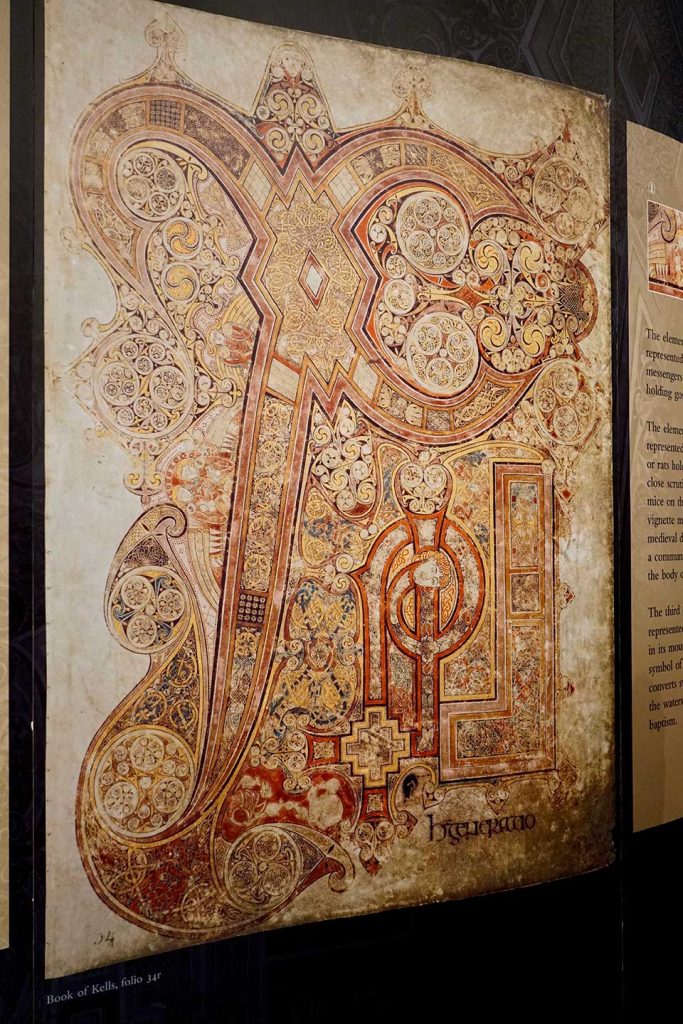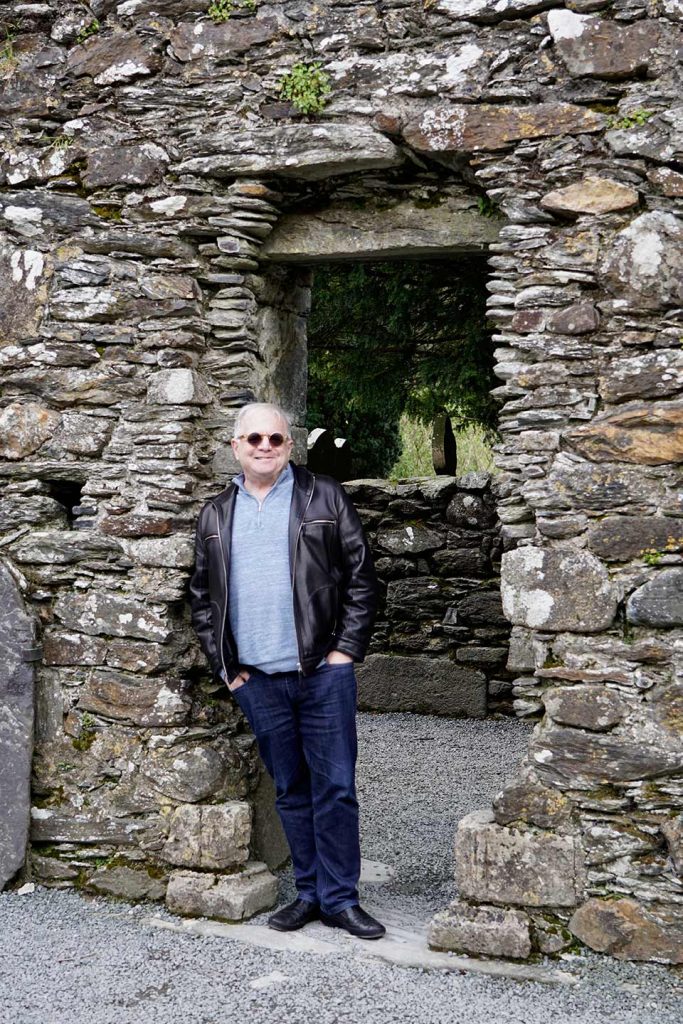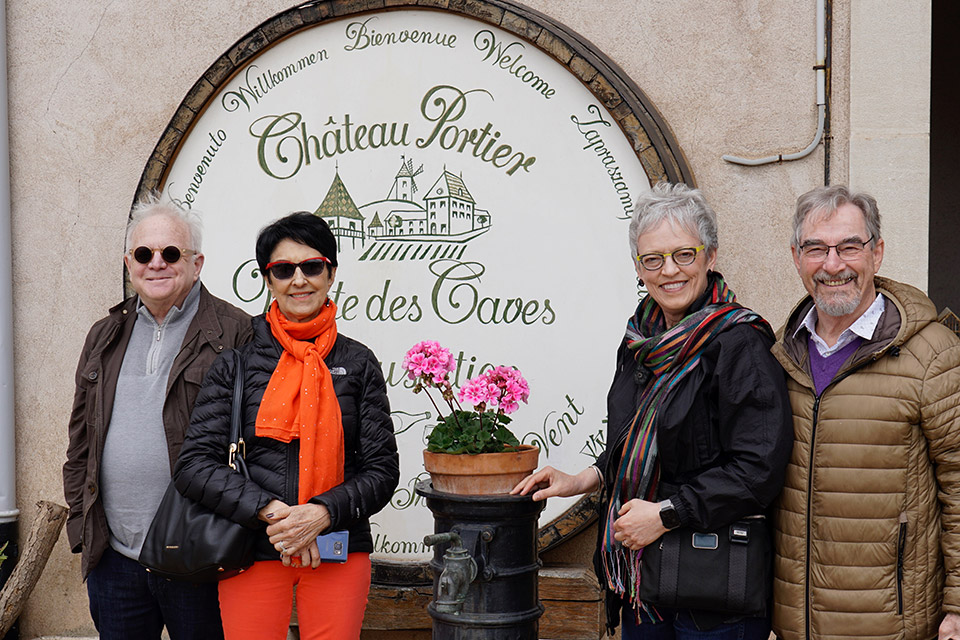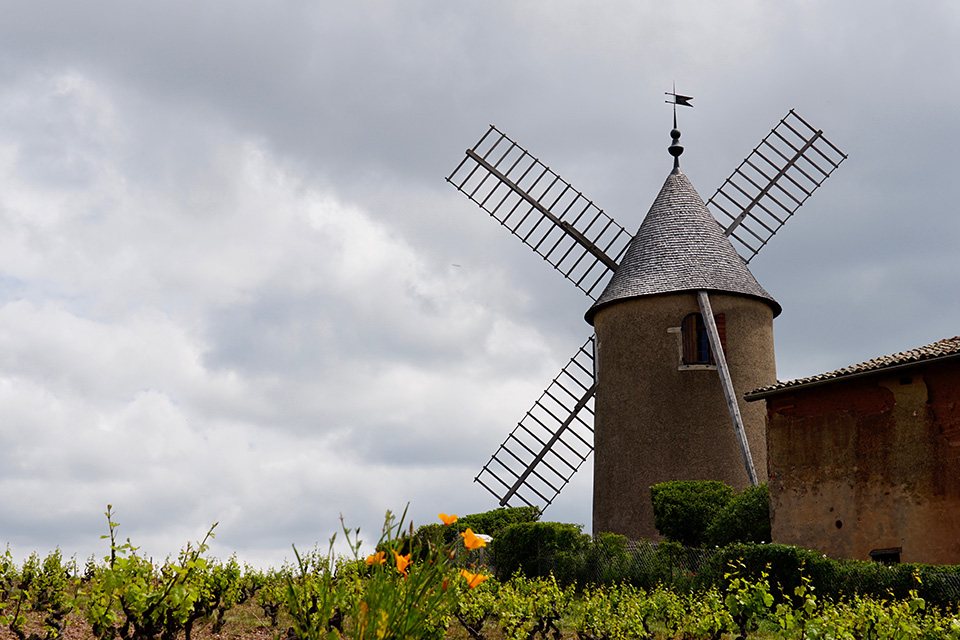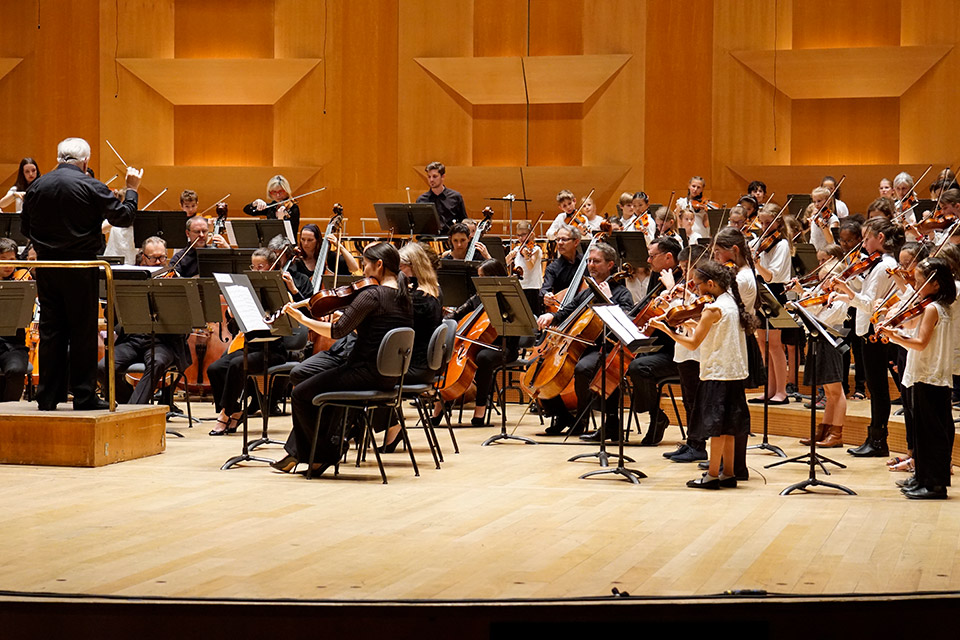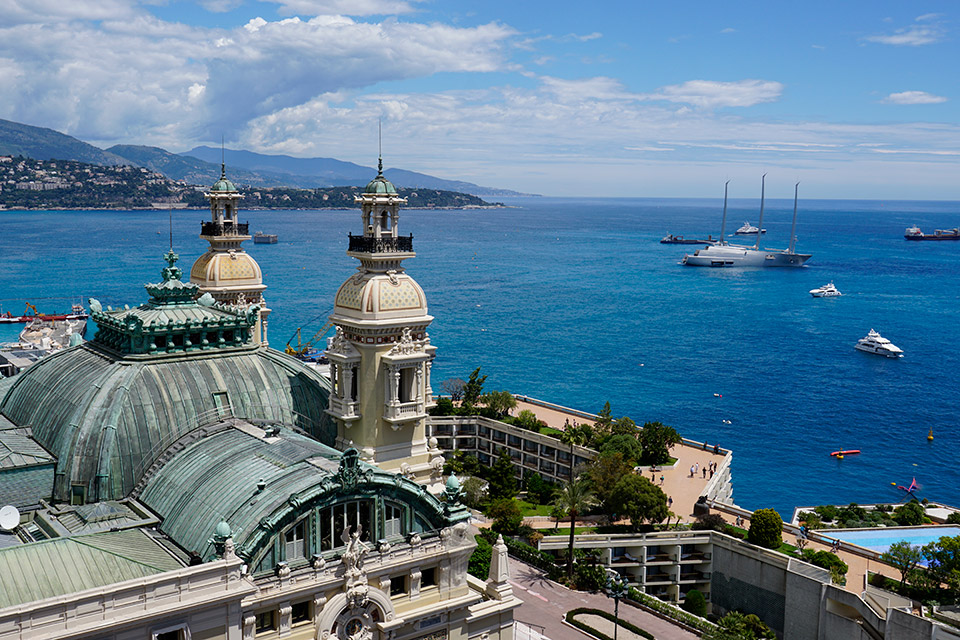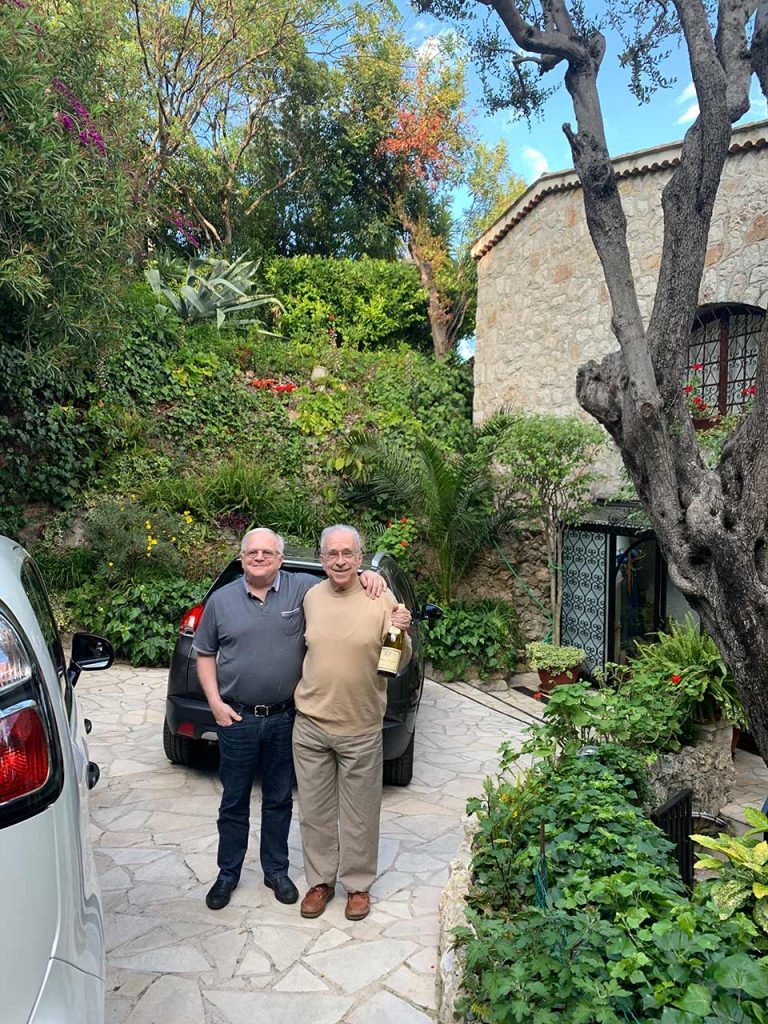Life with fewer responsibilities. It has been a long time coming, but I have a feeling that new challenges await. In the meantime, hitting the guest circuit has been a most refreshing change for me.
Not that there are not tasks to be accomplished as well as other goals to be achieved. After the heart procedure, I heard one thing loud and clear: lower stress. For this first season, after more than 40 years as the person in charge, I wound up working as hard as usual but felt freer to make music at a different level. No longer did I worry about making so many decisions that might impact others in either a positive or negative way. Just leading rehearsals and concerts seemed like plenty to do, and now I could do it in a more focused way.
Take the first stop on May’s calendar, for example. I had been to Dublin a few times before, but never as a conductor of an Irish orchestra. Some of my friends had told me that the RTÉ National Symphony Orchestra was quite good, so I accepted an invitation to conduct there. It turned out to be a good choice.
This has been a year when I have repeated a lot of repertoire with several orchestras. In the past, I would usually try to cram as many different pieces into my calendar as possible. Now it seems more valuable for me to keep a somewhat more condensed set of works in my diary. Not that I still don’t have much to learn with chunks of the musical canon, but for the time being, it feels as if orchestras are more interested in what I have learned throughout my career.
Hence the number times I have performed the Fantastique, Rachmaninov’s Second Symphony, Brahms Four, and Enigma Variations. When I get asked to conduct an ensemble, it is now works such as these that come up as my first suggestions. Once in a while I am asked to do a few pieces slightly under the radar, and in the past, I would have gladly done them. But now I consider the place where I am going and ask myself about the benefit to the orchestra and audience of my doing that particular piece.
In Europe, I have always been able to focus on a diet of the standard repertoire, even though there remain works I either have not performed before or do not want to do again. There are still new compositions to learn, both past and present. More than likely, those will also begin to diminish over the next few years. I look at the repertoire of other senior conductors and now understand why many of them limit themselves to fewer works. With travel and the accompanying jet lag, the need to schlep scores, and the challenge of juggling all those notes in my head, less is better.
Which brings me back to Dublin. The orchestra asked for, and I obliged with, the above-mentioned Elgar. It is always a pleasure to do it, and it is also a good piece when working with an orchestra for the first time. Of course, it is not an easy work, but the technical demands are readily accomplished by students as well as seasoned professionals. Now that I have come to my own conclusions about what the variations truly represent, not to mention the unplayed theme, I have a good time conveying those postulations to the orchestra during rehearsal. I have never believed in speaking too much, but points of history cannot really be conveyed by gesture alone, so I do say a few words as we progress through the friends in Elgar’s life, even to orchestras that have played this piece innumerable times.
It is also a treat to bring a slightly different approach to groups that know a work very well. They appreciate a new view, as long as that vision is supported with musical purpose. I often tell young conductors that if anyone were to ask them why they did something—be it a dynamic change, ritardando or anything else—and it is not indicated by the composer, they must be able to answer only one question: Why?
So once again I served up Elgar in the same manner I have for the last ten years or so. My interpretation these days is not as slow and exaggerated as it was on my recording, which I consider the least successful of all the Elgar I have committed to disc, but I still try to give character to each variation. The RTÉ was excellent, and the first clarinetist deserves kudos for some of the most beautiful pianissimos I have ever encountered.
Opening the program was Cindy’s Circuits. It seemed appropriate to have her work heard in Ireland for the first time. As you have probably figured out, her surname has Irish origins. During this trip, she went to the library and made some very interesting discoveries about her family. Coming to Dublin just a week after laying her mother to rest must have been difficult, but perhaps this journey into the past helped Cindy get through the present.
Several paragraphs ago, I wrote about staying away from pieces I do not care for. That sort of went out the window on this occasion, but there was not much I could do about it. I believe it was in Cincinnati, more than 35 years ago, that I gave my only other performance of Richard Strauss’s Violin Concerto. What? You did not know he wrote one? Well, he probably shouldn’t have. I didn’t like it in Ohio and still think it is a rather thankless piece for everyone involved. Not that it isn’t pleasant, but when a movement concludes and you can’t remember anything you just played, something must be wrong.
The Strauss has its advocates. For me, it is a kind of combination of Weber and Bruch, with very little of the composer I have come to know and love. Yes, there are touches of his hand in the slow movement, but it just does not come together in the same way that his previous composition, the delightful Serenade for Winds, Opus 7, does. The soloist in this instance was Alina Ibragimova, who is Russian born but has been living in London for many years. She was performing the work for the first time, and one could see how she was working her way through this labyrinth of a concerto. She will certainly make it her own in time, and I look forward to performing with her in the future.
I also look forward to seeing the RTÉ again in September. I am not a beer drinker, but Cindy took the opportunity to get an authentic pint of Guinness. We also had a free day to take in some of the sights of the city and its environs. Of particular note was a visit to see the Book of Kells, which sounds like something from Game of Thrones. But the library where it is housed is more reminiscent of Hogwarts, filled with incredible old tomes and hallways where you could imagine the literary geniuses of bygone times drifting by.
***
***
***
A return to familiar territory followed, with a two-week stint in Lyon. It is always wonderful to work with my former colleagues, and this time was no different. There are some new additions to the ONL personnel, the orchestra is in great shape, and the musicians did a superb job in the two programs plus one very special concert.
Walking back into the Auditorium where I spent six very happy years was like coming to a home where I lived for just a little while—friendly faces and smiles all around. It did not feel as if I had left. And the programs were well suited for the orchestra, even with two (actually three) new works on them.
Camille Pepin is not a name familiar to concertgoers, as she is a young composer from Paris who was having her very first orchestral work played on this occasion. It was designed to fit with another work on the program, Haydn’s 103rd Symphony, subtitled “The Drumroll.” That is the sound that starts off the great Austrian’s work and the one that begins Pepin’s new piece.
Influenced by minimalism, and certainly the world of the motion picture soundtrack, she used the orchestra quite masterfully. But that provoked something in my thinking. Recently, almost all of the new pieces I have done are well orchestrated. Composers seem to know how to use the instruments, both as soloists and in concert with each other. I can remember a time when this was not the case.
Perhaps, and this is purely conjecture, the new technologies utilized by those writing have allowed the creators to hear a simulation of how the work will sound. Certainly, the synthesized sonorities are not the same as the actual tones the orchestra produces. But with computer programs such as Sibelius and Finale, it is now possible to get a rough idea of how a composition will resonate in real time.
Haydn seems to have fallen off most musicians’ radar, including mine. There was a time when I was performing his symphonies regularly. I even recorded the final twelve. But these days, we simply do not hear his music in the concert hall very often. This is especially true of programs led by younger conductors, who I hope will seize an opportunity to explore the wealth of treasures from Papa.
One note popped up on my Facebook page that piqued my curiosity. Having written about the neglect of Haydn, a member of the St. Louis Symphony thought it might be a good idea for that orchestra to record all his symphonies over a period of years. There has never been a cycle by an American orchestra, and unless the rules change, there is not about to be. Many years ago, it was decided that when an orchestra records, every member of the ensemble has to be paid. So unless Haydn could be edited to include harp, tuba, and all the other instruments not included in the symphonies, do not hold your breath.
Our soloist was Nikolai Lugansky, a pianist I have only worked with once before. His vehicle in Lyon was the mountain of a concerto—the Second of Brahms. Almost a symphony, it requires the utmost in musical insight and technique, both of which Nikolai certainly has. We had three performances, with two in Lyon and one in Échirolles, a small city in the Rhone-Alpes region of France. It is near Grenoble, and the ONL plays there almost every year. Each performance was sold out, and the audiences were most enthusiastic. Especially beautiful was the solo cello playing by Edouard Sapey-Triomphe.
A day off in the Beaujolais region was a nice diversion, with a visit to a vineyard and a very French country restaurant that provided colorful flavor to the journey. Cindy’s French teacher and her partner were our gracious hosts, and it was a rare opportunity to take in the sights of the region.
***
***
A last-minute program change did not hinder anyone from either performing or coming to the next week of concerts. Renaud Capuçon was scheduled to play the Brahms Violin Concerto but instead decided to focus on the Dvořák, a work he would be performing over the next few weeks. Not as popular as the composer’s cello concerto but slightly more appreciated than the piano concerto, Dvořák’s violin concerto is a true delight. I had the honor of performing it once with Nathan Milstein, who virtually owned the piece. This jewel of a concerto has drama, great tunes and a dancing grace, all of which make one ask why it is so neglected.
Renaud brought his considerable charm to the proceedings, as well as his incredible variety of tonal color. As an encore, he invited the ONL’s harpist, Éléonore Euler-Cabantous, to join him for the ever-popular “Méditation” from Thaïs. I always enjoy it when the soloist utilizes the services of someone from the orchestra for these extras. It shows respect for the institution, engages the musicians onstage, and really sends a wonderful message to the audience.
Opening the proceedings was “Hunter” from a three-movement work by Kaija Saariaho called Orion. At around five minutes, this is a colorful piece from a composer who has become one of the most influential voices in music today. At some point during the week someone pointed out to me that I had conducted five consecutive weeks with compositions by women on the program. This never occurred to me, and I am pleased that these kinds of thoughts never enter my mind.
The Suite from Appalachian Spring filled out the first half of the program. There was a time when works such as this were not so easy for orchestras other than those from America. Today’s musical world is quite different. Finding the balance between achieving so-called authentic performance style and keeping the individual identity of performers is difficult. For me, the latter is the only part that counts. I want to hear how musicians from diverse backgrounds take on almost anything. Imagine if we declared that orchestras in the States should not play Beethoven, Bartok or Stravinsky simply because they do not reflect the sound the composer heard when the pieces were written.
To that end, this was one of the very best renderings of the Copland it has ever been my privilege to conduct. The ONL responded with fantastic precision and the tonal beauty required for the most sensitive moments of the score. Yes, the wind soloists played with their traditional French sound and style, but it seemed both different and wonderful at the same time. And the audiences were spellbound by the work’s final few minutes, with a lovely silence following the slightly inconclusive final chord.
My last day in Lyon was devoted to an annual event that began during my tenure as music director. This is called a concert participatif. In the past, members of the audience were invited to bring their own instruments to the hall and join in by playing along for a couple of familiar works with the ONL. It was always amusing to see people dragging their accordions into the Auditorium.
This time the event took place during a weekend devoted to matters related to the violin. Master classes, examples of instrument making, and performances took place over a two-day period. The culminating concert was something truly amazing. Jean-Pascal Beintus is a composer known primarily for his work in film and television, but for this occasion, he took on a unique project.
The idea was to create an opportunity for 150 young violinists to participate in performing a new work written specifically for them. These kids came from Lyon and the surrounding areas. They ranged in age from five years old to 18. Renaud was the soloist and the high schoolers played the first violin part, with the younger students taking on the second violin role. It worked on every level—a fantastic sight and sound event, and one that I hope can be emulated somewhere in the States.
The last stop during this European jaunt was to an orchestra I had not worked with in more than 30 years. For many, Monte Carlo seems as remote a destination for a fine orchestra as one can imagine. After all, the city’s fame rests with the glitzy, the world of Formula 1 racing, and of course, the grand casino. People come from all over to gawk at the impossible lifestyles of the rich and famous, waiting in vain for James Bond to pop out of his Aston Martin.
But with a distinguished history of its own, this city can pride itself on an excellent ensemble, which in this week performed at its highest level. I found a group of musicians eager to make music and more than willing to share ideas in the short span of four days.
Brahms’s Fourth Symphony was the main course on the musical menu. It is fast becoming the most-performed work by that composer in my repertoire. Sadly, the Third still lags behind the other three, though each of the four works is masterfully written and noted for its individuality. From the initial upbeat at the first rehearsal, it was clear that the musicians had come to work. We read through the piece, and they kindly gave me a round of applause after we came to the final E minor chord.
Our working sessions were all about balances, phrasing, and making sure that everyone knew what their colleagues were doing throughout the work. The hall is actually located below sea level, next to the Mediterranean. The acoustic is a bit dry and, in some places, unforgiving. There are tricks I have learned over the years to compensate, including asking the strings to continue to vibrate after they have concluded some passages.
At the end of the dress rehearsal, I told them how much I had enjoyed working with each musician and reminded everyone of why we got into this profession in the first place. That is what a good week with Johannes will do to you.
Opening the program was Cindy’s Adagio for Strings, with a slight nod to Barber. But the real acknowledgement goes to Penderecki, whose “Agnus Dei” from his Polish Requiem is the inspiration for this moving work. Several musicians thanked me for bringing this piece to them, and a couple members in attendance at the dress rehearsal were moved to tears.
The soloist was Seong-Jin Cho, winner of the Chopin Piano Competition in 2015. Although he was originally scheduled to play the First Concerto by Rachmaninov, we changed it to the Second of Prokofiev. Apparently he suffered a shoulder injury and did not have enough time to practice the former, as this would have been his first time out with the piece. The replacement work is a real finger buster, and I hoped that there would be no recurrence of the impairment.
Delivering a powerful performance with virtuosity to spare, he took on the immense difficulties with relative ease. I am not sure that a performance of this work is supposed to seem quite that comfortable, but then again there was a time when no one really could master it. Now it shows up quite often at competitions. I look forward to seeing him again in July when we do the Second Rachmaninov in Aspen.
My longtime friend, conductor Larry Foster, was music director in Monte Carlo and still resides there. We had a fabulous evening together with his wife, Angela. The stories and wine flowed freely, and I urged him to write things down. His life has been so interesting and would make a terrific read. It is wonderful to have connections that are truly based on long-lasting friendships.
***
With just one more week of conducting before a much-needed break, I look forward to seeing my former band in Detroit. And then it will be back to St. Louis, where I will spend a month preparing for the impending nuptials of my son out in LA. Four weeks should about do it in terms of understanding my role as a father-in-law. But there will be lots to write about. I have to do something to combat Game of Thrones withdrawal. Meanwhile, here’s hoping that the St. Louis Blues can pull off a Stanley Cup win for the first time in their history.
See you next month,
Leonard
